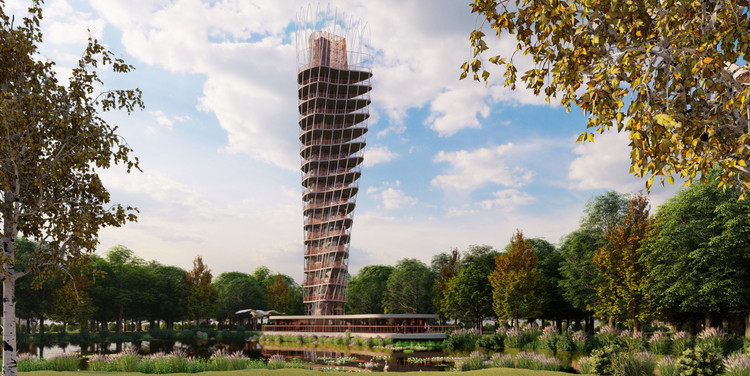
Over the past two decades, the role of representation and rendering has changed dramatically in the architecture, engineering, and construction industries. New rendering technologies, techniques, and programs, such as Lumion, have been contributing to this change. By including 3D rendering tools, architects and designers can take advantage of easy-to-use, multifunctional visualization technology that serves to strengthen creativity rather than stifle it.
In the past, we used representations of hand-drawn, sketched buildings and while these were often beautiful designs and a great way to present project ideas to clients, they were mainly used as the result of the design process. In other words, they were not typically involved in processes such as project studies or interactivity (changing materials quickly to see what looks best, for example).

While many architects still use sketches as an important tool to better understand design and communicate design ideas, a problem with hand drawings is that they are often slow and not flexible enough for specialized needs. With a 3D rendering program, architects and visualization experts can instantly produce virtual reality-ready images, videos and panoramas and a multitude of visualization needs.
Here are some possibilities of what you can do in Lumion:
Urban Projects

For urban projects, you can use features such as Open Street Map (OSM) to quickly create the urban or rural context. Another option is to merge drone images with photogrammetry software.

Lighting

With advanced lighting and shadow technologies, Lumion can also be an instrumental tool when showing and discussing the lighting of a project. In seconds, you can change ambient lighting as well as artificial lights to better understand the full lighting profile of your project, from the soft golden tones of dawn to the dark of night.

Street Views
If you are in the early stages of the design process and want to see what your project will look like from the eyes of theviewer, use Lumion to get a perspective on the street view with realistic lighting.
Materials and Textures
By using Lumion to present or evaluate materials, you can easily get an idea of the impact your material choices will have. Plus, because of the variety of high quality materials available in Lumion's large content library, you can easily show an accurate representation of your design without having to endure the frustration of searching for or making your own materials.
Digital Nature

Another benefit of Lumion is its ability to quickly and easily render digitized nature scenes in a beautiful and captivating way. Here are some examples of the presentation:
Project Research

Not only is Lumion suitable for presentations, it can also be an extremely useful tool for design research, such as when you need to review certain parts of your building, see how lighting interacts within spaces, explore future dwellers' views of balconies, and so on.
Styles for Each Phase of the Architectural Process

There are many options for creating different styles in Lumion. For example, when you are at the beginning of the design phase and don't want to talk about materials or colors, you can use a sketch or other artistic style to keep the conversation focused.
Later you can instantly switch to a more detailed style using some of Lumion's style presets.
360 Panoramas and Virtual Reality

You can also use Lumion for Virtual Reality with devices like Oculus Go and most other VR headsets.
And the best part - creating a 360 panorama requires just a few clicks and about a minute of rendering time.
Lumion Workflow
In this section, architect Paul Spaltman shows an example of a Lumion workflow, from importing the 3D model to adding final effects and rendering.
O clipe de vídeo abaixo tem aproximadamente 10 minutos:


